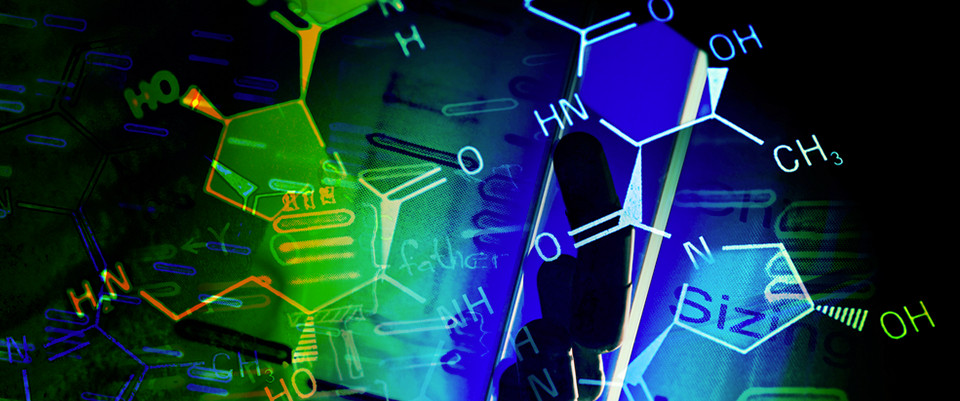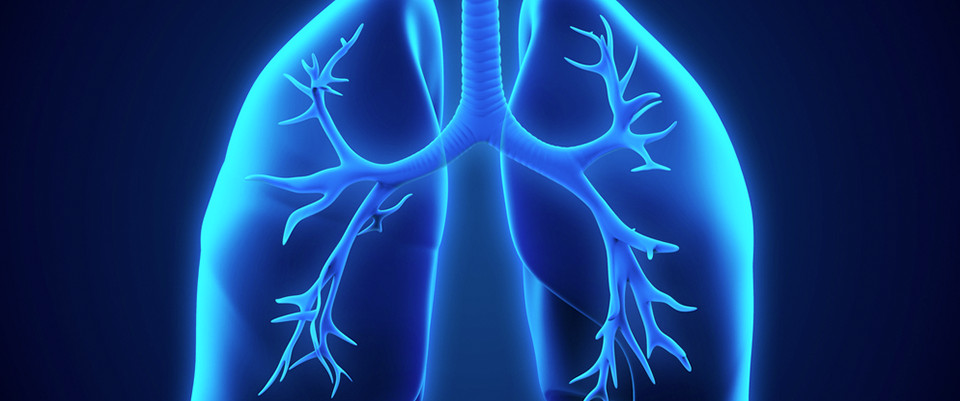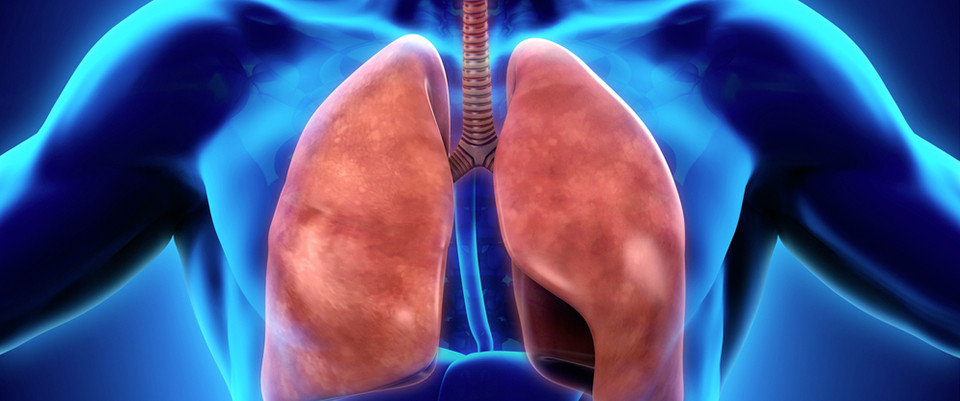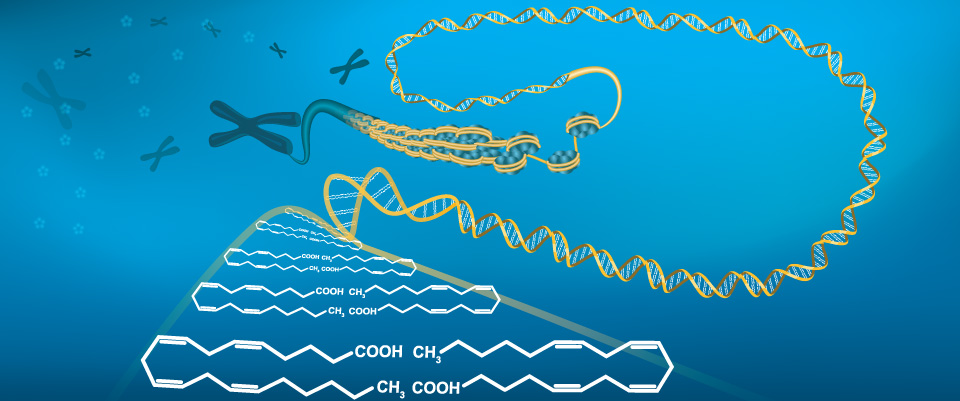PubMed
Investigation of Liver Injury of Polygonum multiflorum Thunb. in Rats by Metabolomics and Traditional Approaches.
Investigation of Liver Injury of Polygonum multiflorum Thunb. in Rats by Metabolomics and Traditional Approaches.
Front Pharmacol. 2017;8:791
Authors: Li YX, Gong XH, Liu MC, Peng C, Li P, Wang YT
Abstract
Liver injury induced by Polygonum multiflorum Thunb. (PM) have been reported since 2006, which aroused widespread concern. However, the toxicity mechanism of PM liver injury remained unclear. In this study, the mechanism of liver injury induced by different doses of PM after long-term administration was investigated in rats by metabolomics and traditional approaches. Rats were randomly divided into control group and PM groups. PM groups were oral administered PM of low (10 g/kg), medium (20 g/kg), high (40 g/kg) dose, while control group was administered distilled water. After 28 days of continuous administration, the serum biochemical indexes in the control and three PM groups were measured and the liver histopathology were analyzed. Also, UPLC-Q-TOF-MS with untargeted metabolomics was performed to identify the possible metabolites and pathway of liver injury caused by PM. Compared with the control group, the serum levels of ALT, AST, ALP, TG, and TBA in middle and high dose PM groups were significantly increased. And the serum contents of T-Bil, D-Bil, TC, TP were significantly decreased. However, there was no significant difference between the low dose group of PM and the control group except serum AST, TG, T-Bil, and D-Bil. Nine biomarkers were identified based on biomarkers analysis. And the pathway analysis indicated that fat metabolism, amino acid metabolism and bile acid metabolism were involved in PM liver injury. Based on the biomarker pathway analysis, PM changed the lipid metabolism, amino acid metabolism and bile acid metabolism and excretion in a dose-dependent manner which was related to the mechanism of liver injury.
PMID: 29163173 [PubMed]
Chemopreventive effects of Ku-jin tea against AOM-induced precancerous colorectal lesions in rats and metabolomic analysis.
Chemopreventive effects of Ku-jin tea against AOM-induced precancerous colorectal lesions in rats and metabolomic analysis.
Sci Rep. 2017 Nov 21;7(1):15893
Authors: Bi W, Liu H, Shen J, Zhang LH, Li P, Peng B, Cao L, Zhang P, He C, Xiao P
Abstract
Ku-jin tea (KJT) is a health beverage prepared from the leaves of the plant Acer tataricum subsp. ginnala that has been consumed in some regions of China for thousands of years. KJT contains high levels of anti-inflammatory and antioxidative compounds such as ginnalins, but little is known about the chemopreventive effect of KJT on colon cancer. In this study, we investigated the preventive effects of KJT on colon carcinogenesis using the azoxymethane (AOM)-induced precancerous colorectal lesion model in rats. The results showed that the number of aberrant crypts, aberrant crypt foci (ACF) and crypts/focus in rats of the KJT + AOM group were significantly decreased compared with rats of the AOM group (p < 0.01). Further exploration of the prevention mechanism of KJT by UPLC-QTOF/MS-based urinary metabolomics showed that 5 metabolic pathways were modulated, including purine metabolism and amino acid metabolism, in the group with KJT. In addition, the levels of the immunomodulatory cytokines IL-1α and IL-10 were significantly decreased, and the levels of IL-2 in the serum of AOM rats increased after KJT treatment. Our present data suggest that KJT can inhibit AOM-induced colonic ACF formation and might be a useful chemopreventive agent against colorectal carcinogenesis.
PMID: 29162930 [PubMed - in process]
Exocytosis-coordinated mechanisms for tip growth underlie pollen tube growth guidance.
Exocytosis-coordinated mechanisms for tip growth underlie pollen tube growth guidance.
Nat Commun. 2017 Nov 22;8(1):1687
Authors: Luo N, Yan A, Liu G, Guo J, Rong D, Kanaoka MM, Xiao Z, Xu G, Higashiyama T, Cui X, Yang Z
Abstract
Many tip-growing cells are capable of responding to guidance cues, during which cells precisely steer their growth toward the source of guidance signals. Though several players in signal perception have been identified, little is known about the downstream signaling that controls growth direction during guidance. Here, using combined modeling and experimental studies, we demonstrate that the growth guidance of Arabidopsis pollen tubes is regulated by the signaling network that controls tip growth. Tip-localized exocytosis plays a key role in this network by integrating guidance signals with the ROP1 Rho GTPase signaling and coordinating intracellular signaling with cell wall mechanics. This model reproduces the high robustness and responsiveness of pollen tube guidance and explains the connection between guidance efficiency and the parameters of the tip growth system. Hence, our findings establish an exocytosis-coordinated mechanism underlying the cellular pathfinding guided by signal gradients and the mechanistic linkage between tip growth and guidance.
PMID: 29162819 [PubMed - in process]
Discovery and Validation of Pyridoxic Acid and Homovanillic Acid as Novel Endogenous Plasma Biomarkers of Organic Anion Transporter (OAT) 1 and OAT3 in Cynomolgus Monkeys.
Discovery and Validation of Pyridoxic Acid and Homovanillic Acid as Novel Endogenous Plasma Biomarkers of Organic Anion Transporter (OAT) 1 and OAT3 in Cynomolgus Monkeys.
Drug Metab Dispos. 2017 Nov 21;:
Authors: Shen H, Nelson DM, Oliveira RV, Zhang Y, Mcnaney CA, Gu X, Chen W, Su C, Reily MD, Shipkova PA, Gan J, Lai Y, Marathe P, Humphreys WG
Abstract
Perturbation of OAT1- and OAT3-mediated transport can alter the exposure, efficacy, and safety of drugs. Although these have been reports of the endogenous biomarkers for OAT1/3, none of these have all of the characteristics required for a clinical useful biomarker. Cynomolgus monkeys were treated with intravenous probenecid (PROB) at a dose of 40 mg/kg in this study. As expected, PROB increased the AUC of co-administered furosemide (FSM), a known substrate of OAT1 and OAT3, by 4.1-fold, consistent with the values reported in humans (3.1- to 3.7-fold). Of 233 plasma metabolites analyzed using a LC-MS/MS-based metabolomics method, 29 metabolites, including pyridoxic acid (PDA) and homovanillic acid (HVA), were significantly increased at either 1 or 3 h in plasma from the monkeys pretreated with PROB compared with the treated animals. Plasma of animals was then subjected to targeted LC-MS/MS analysis which confirmed that the PDA and HVA AUCs increased by approximately 2- to 3-fold by PROB pretreatments. PROB also increased plasma concentrations of hexadecanedioic acid (HDA) and tetradecanedioic acid (TDA) although the increases were not statistically significant. Moreover, transporter profiling assessed using stable cell lines constitutively expressing transporters, demonstrated that PDA and HVA are substrates for human OAT1, OAT3, OAT2 (HVA) and OAT4 (PDA), but not OCT2, MATE1, MATE2K, OATP1B1, OATP1B3, and NTCP. Collectively, these findings suggest that PDA and HVA might serve as blood-based endogenous probes of cynomolgus monkey OAT1 and OAT3, and investigation of PDA and HVA as circulating endogenous biomarkers of human OAT1 and OAT3 function is warranted.
PMID: 29162614 [PubMed - as supplied by publisher]
Chemomics-based marker compounds mining and mimetic processing for exploring chemical mechanisms in traditional processing of herbal medicines, a continuous study on Rehmanniae Radix.
Chemomics-based marker compounds mining and mimetic processing for exploring chemical mechanisms in traditional processing of herbal medicines, a continuous study on Rehmanniae Radix.
J Chromatogr A. 2017 Nov 18;:
Authors: Zhou L, Xu JD, Zhou SS, Shen H, Mao Q, Kong M, Zou YT, Xu YY, Xu J, Li SL
Abstract
Exploring processing chemistry, in particular the chemical transformation mechanisms involved, is a key step to elucidate the scientific basis in traditional processing of herbal medicines. Previously, taking Rehmanniae Radix (RR) as a case study, the holistic chemome (secondary metabolome and glycome) difference between raw and processed RR was revealed by integrating hyphenated chromatographic techniques-based targeted glycomics and untargeted metabolomics. Nevertheless, the complex chemical transformation mechanisms underpinning the holistic chemome variation in RR processing remain to be extensively clarified. As a continuous study, here a novel strategy by combining chemomics-based marker compounds mining and mimetic processing is proposed for further exploring the chemical mechanisms involved in herbal processing. First, the differential marker compounds between raw and processed herbs were rapidly discovered by untargeted chemomics-based mining approach through multivariate statistical analysis of the chemome data obtained by integrated metabolomics and glycomics analysis. Second, the marker compounds were mimetically processed under the simulated physicochemical conditions as in the herb processing, and the final reaction products were chemically characterized by targeted chemomics-based mining approach. Third, the main chemical transformation mechanisms involved were clarified by linking up the original marker compounds and their mimetic processing products. Using this strategy, a set of differential marker compounds including saccharides, glycosides and furfurals in raw and processed RR was rapidly found, and the major chemical mechanisms involved in RR processing were elucidated as stepwise transformations of saccharides (polysaccharides, oligosaccharides and monosaccharides) and glycosides (iridoid glycosides and phenethylalcohol glycosides) into furfurals (glycosylated/non-glycosylated hydroxymethylfurfurals) by deglycosylation and/or dehydration. The research deliverables indicated that the proposed strategy could advance the understanding of RR processing chemistry, and therefore may be considered a promising approach for delving into the scientific basis in traditional processing of herbal medicines.
PMID: 29162232 [PubMed - as supplied by publisher]
metabolomics; +16 new citations
16 new pubmed citations were retrieved for your search.
Click on the search hyperlink below to display the complete search results:
metabolomics
These pubmed results were generated on 2017/11/22PubMed comprises more than millions of citations for biomedical literature from MEDLINE, life science journals, and online books.
Citations may include links to full-text content from PubMed Central and publisher web sites.
metabolomics; +19 new citations
19 new pubmed citations were retrieved for your search.
Click on the search hyperlink below to display the complete search results:
metabolomics
These pubmed results were generated on 2017/11/21PubMed comprises more than millions of citations for biomedical literature from MEDLINE, life science journals, and online books.
Citations may include links to full-text content from PubMed Central and publisher web sites.
metabolomics; +19 new citations
19 new pubmed citations were retrieved for your search.
Click on the search hyperlink below to display the complete search results:
metabolomics
These pubmed results were generated on 2017/11/21PubMed comprises more than millions of citations for biomedical literature from MEDLINE, life science journals, and online books.
Citations may include links to full-text content from PubMed Central and publisher web sites.
Metabolic dynamics and physiological adaptation of Panax ginseng during development.
Related Articles
Metabolic dynamics and physiological adaptation of Panax ginseng during development.
Plant Cell Rep. 2017 Nov 17;:
Authors: Kim YJ, Joo SC, Shi J, Hu C, Quan S, Hu J, Sukweenadhi J, Mohanan P, Yang DC, Zhang D
Abstract
KEY MESSAGE: The dynamics of metabolites from leaves to roots of Panax ginseng during development has revealed the tissue-specific and year-specific metabolic networks. Being an essential Oriental medicinal plant, ginseng (Panax ginseng Meyer) is a slow-growing perennial herb-accumulating pharmaceutically active metabolites such as ginsenosides in roots during growth. However, little is known about how ginseng plants survive in the harsh environments such as winter cold and summer heat for a longer period and accumulates those active metabolites as the plant grows. To understand the metabolic kinetics in both source and sink organs such as leaves and roots of ginseng plant, respectively, and to assess the changes in ginsenosides biosynthesis during ginseng growth, we investigated the metabolic profiles from leaves and roots of 1-, 4-, and 6-year-old field-grown ginseng plants. Using an integrated non-targeted metabolomic approach, we identified in total 348 primary and secondary metabolites, which provided us for the first time a global metabolomic assessment of ginseng during growth, and morphogenesis. Strikingly, the osmoprotectants and oxidized chemicals were highly accumulated in 4- and 6-year-old ginseng leaves suggested that ginseng develop a wide range of metabolic strategies to adapt unfavorable conditions as they mature. In 6-year-old plants, ginsenosides were decreased in leaves but increased in roots up to 1.2- to sixfold, supporting the view that there is a long-distance transport of ginsenosides from leaves to roots as ginseng plants mature. Our findings provide insights into the metabolic kinetics during the development of ginseng plant and this could complement the pharmacological importance of ginseng and its compounds according to their age.
PMID: 29150823 [PubMed - as supplied by publisher]
NMR Metabolomics for Stem Cell type discrimination.
Related Articles
NMR Metabolomics for Stem Cell type discrimination.
Sci Rep. 2017 Nov 17;7(1):15808
Authors: Castiglione F, Ferro M, Mavroudakis E, Pellitteri R, Bossolasco P, Zaccheo D, Morbidelli M, Silani V, Mele A, Moscatelli D, Cova L
Abstract
Cell metabolism is a key determinant factor for the pluripotency and fate commitment of Stem Cells (SCs) during development, ageing, pathological onset and progression. We derived and cultured selected subpopulations of rodent fetal, postnatal, adult Neural SCs (NSCs) and postnatal glial progenitors, Olfactory Ensheathing Cells (OECs), respectively from the subventricular zone (SVZ) and the olfactory bulb (OB). Cell lysates were analyzed by proton Nuclear Magnetic Resonance ((1)H-NMR) spectroscopy leading to metabolites identification and quantitation. Subsequent multivariate analysis of NMR data by Principal Component Analysis (PCA), and Partial Least Square Discriminant Analysis (PLS-DA) allowed data reduction and cluster analysis. This strategy ensures the definition of specific features in the metabolic content of phenotypically similar SCs sharing a common developmental origin. The metabolic fingerprints for selective metabolites or for the whole spectra demonstrated enhanced peculiarities among cell types. The key result of our work is a neat divergence between OECs and the remaining NSC cells. We also show that statistically significant differences for selective metabolites characterizes NSCs of different ages. Finally, the retrived metabolome in cell cultures correlates to the physiological SC features, thus allowing an integrated bioengineering approach for biologic fingerprints able to dissect the (neural) SC molecular specificities.
PMID: 29150616 [PubMed - in process]
Mitochondrial DNA changes in pedunculopontine cholinergic neurons in Parkinson's.
Mitochondrial DNA changes in pedunculopontine cholinergic neurons in Parkinson's.
Ann Neurol. 2017 Nov 17;:
Authors: Bury AG, Pyle A, Elson JL, Greaves L, Morris CM, Hudson G, Pienaar IS
Abstract
In Parkinson's disease (PD), mitochondrial dysfunction associates with nigral dopaminergic neuronal loss. Cholinergic neuronal loss co-occurs, particularly within a brainstem structure, the pedunculopontine nucleus (PPN). We isolated single cholinergic neurons from post-mortem PPNs of aged controls and PD patients. Mitochondrial DNA (mtDNA) copy number and mtDNA deletions were increased significantly in PD patients compared to controls. Furthermore, compared to controls the PD patients had significantly more PPN cholinergic neurons containing mtDNA deletion levels exceeding 60%, a level associated with deleterious effects on oxidative phosphorylation. The current results differ from studies reporting mtDNA depletion in nigral dopaminergic neurons of PD patients. This article is protected by copyright. All rights reserved.
PMID: 29149768 [PubMed - as supplied by publisher]
Effects of Tao-Hong-Si-Wu decoction on acute blood stasis in rats based on a LC-Q/TOF-MS metabolomics and network approach.
Effects of Tao-Hong-Si-Wu decoction on acute blood stasis in rats based on a LC-Q/TOF-MS metabolomics and network approach.
Biomed Chromatogr. 2017 Nov 17;:
Authors: Ma Q, Li PL, Hua YL, Ji P, Yao WL, Zhang XS, Zhong LJ, Wei YM
Abstract
A novel approach using metabolomics coupled with a metabolic network was used to investigate the effects of THSWD on the rat model of acute blood stasis syndrome. Acute blood stasis syndrome was induced by placing the rats in ice-cold water following two injections with epinephrine. The hemorheological indicators (WBV and PV), and the blood coagulation indicators (TT, PT, APTT, and FIB) were detected. The nonparametric univariate method and multivariate statistical analysis were performed for determining the potential biomarkers. A correlation map was structured between biochemical indicators and hub metabolites to explain the effects mechanism of THSWD. After the administration of THSWD, the levels of WBV, PV, TT, APTT, and FIB returned to levels observed in the control group. According to metabolomics coupled with metabolic network analysis, the intervention of THSWD in rats with acute blood stasis syndrome induced substantial and characteristic changes in their metabolic profiles. Fifteen metabolites were screened, which mainly involved ten pathways and five hub metabolites, namely, L-glutamate, L-phenylalanine, N-acylsphingosine, arachidonic acid and phosphatidate. The biochemical indicators and hub metabolites could be adjusted close to normal levels by THSWD. Therefore, combining metabolomics and metabolic network helped evaluate the effects of THSWD on acute blood stasis.
PMID: 29149492 [PubMed - as supplied by publisher]
Evolution of the metabolome in response to selection for increased immunity in populations of Drosophila melanogaster.
Evolution of the metabolome in response to selection for increased immunity in populations of Drosophila melanogaster.
PLoS One. 2017;12(11):e0188089
Authors: Gogna N, Sharma R, Gupta V, Dorai K, Prasad NG
Abstract
We used NMR-based metabolomics to test two hypotheses-(i) there will be evolved differences in the metabolome of selected and control populations even under un-infected conditions and (ii) post infection, the metabolomes of the selected and control populations will respond differently. We selected replicate populations of Drosophila melanogaster for increased survivorship (I) against a gram-negative pathogen. We subjected the selected (I) and their control populations (S) to three different treatments: (1) infected with heat-killed bacteria (i), (2) sham infected (s), and (3) untreated (u). We performed 1D and 2D NMR experiments to identify the metabolic differences. Multivariate analysis of the metabolic profiles of the untreated (Iu and Su) flies yielded higher concentrations of lipids, organic acids, sugars, amino acids, NAD and AMP in the Iu treatment as compared to the Su treatment, showing that even in the absence of infection, the metabolome of the I and S regimes was different. In the S and I regimes, post infection/injury, concentration of metabolites directly or indirectly associated with energy related pathways (lipids, organic acids, sugars) declined while the concentration of metabolites that are probably associated with immune response (amino acids) increased. However, in most cases, the I regime flies had a higher concentration of such metabolites even under un-infected conditions. The change in the metabolite concentration upon infection/injury was not always comparable between I and S regimes (in case of lactate, alanine, leucine, lysine, threonine) indicating that the I and S regimes had evolved to respond differentially to infection and to injury.
PMID: 29149207 [PubMed - in process]
Proton Nuclear Magnetic Resonance (¹H-NMR)-Based Metabolomic Evaluation of Human Renal Allografts from Donations After Circulatory Death.
Proton Nuclear Magnetic Resonance (¹H-NMR)-Based Metabolomic Evaluation of Human Renal Allografts from Donations After Circulatory Death.
Med Sci Monit. 2017 Nov 17;23:5472-5479
Authors: Wang Z, Yang H, Zhao C, Wei J, Wang J, Han Z, Tao J, Xu Z, Ju X, Tan R, Gu M
Abstract
BACKGROUND Delayed graft function (DGF) is a common complication that impairs allograft function after kidney transplantation. However, the mechanism of DGF remains unclear. Nuclear magnetic resonance (NMR)-based analysis has been widely used in recent times to assess changes in metabolite levels. MATERIAL AND METHODS Samples of perfusate from allografts donated after circulatory death were collected prior to transplantation, during static cold storage. ¹H-NMR-based metabolomics combined with the statistical methods, orthogonal partial least-squares discriminant analysis (OPLS-DA), and principle-component analysis (PCA), were employed to test different levels of metabolites between the allografts that exhibited DGF and those that exhibited immediate graft function (IGF). RESULTS The study population consisted of 36 subjects, 11 with DGF and 25 with IGF. Of the 37 detected and identified metabolites, a-glucose and citrate were significantly elevated in the perfusate of DGF allografts, and taurine and betaine were significantly decreased. CONCLUSIONS ¹H-NMR analysis of DGF and IGF perfusates revealed some significant differences in their metabolite profiles, which may help explain the mechanisms of kidney ischemia-reperfusion injury and DGF.
PMID: 29149095 [PubMed - in process]
Themed issue on 'emerging technologies in mass spectrometry'.
Themed issue on 'emerging technologies in mass spectrometry'.
Bioanalysis. 2017 Nov;9(21):1617-1618
Authors: Campbell JL, Plumb R
PMID: 29148832 [PubMed - in process]
Metabolic effects of p,p'-DDE on Atlantic salmon hepatocytes.
Metabolic effects of p,p'-DDE on Atlantic salmon hepatocytes.
J Appl Toxicol. 2017 Nov 17;:
Authors: Olsvik PA, Søfteland L
Abstract
Decades after being banned in many countries, DDT and its metabolites are still considered major environmental hazards. The p,p'-DDE isomer, the DDT metabolite found in highest concentration in aquaculture feeds, is an endocrine disruptor with demonstrated ability to induce epigenetic effects. This study aimed at examining the impact of p,p'-DDE on Atlantic salmon. Primary hepatocytes were exposed to four concentrations of p,p'-DDE (0.1, 1, 10, 100 μm) for 48 hours, and endpoints included cytotoxicity, global DNA methylation, targeted transcription and metabolomics profiling (100 μm). p,p'-DDE was moderately cytotoxic at 100 μm. No impact was seen on global DNA methylation. Vtg1 and esr1 transcription, markers of endocrine disruption, was most strongly induced at 10 μm p,p'-DDE, while ar showed strongest response at 100 μm. Metabolomics profiling showed that p,p'-DDE at 100 μm most strongly affected carbohydrate metabolism, primary bile acid metabolism, leucine, isoleucine and valine metabolism, diacylglycerol and sphingolipid metabolism. Observed changes in lipid levels suggest that p,p'-DDE interferes with phospholipid membrane biosynthesis. Elevation of bile acid levels in p,p'-DDE-exposed hepatocytes indicates upregulation of synthesis of bile acids after cytochrome P450 activation. Pathway analysis showed that the superpathway of methionine degradation was the most significantly affected pathway by p,p'-DDE exposure, while endocrine system disorder topped the diseases and disorder ranking. In conclusion, this work predicts an endocrine response to p,p'-DDE exposure, and demonstrates how this legacy pesticide might interfere with mechanisms linked to DNA methylation in Atlantic salmon hepatocytes.
PMID: 29148584 [PubMed - as supplied by publisher]
Trial watch: Immune checkpoint blockers for cancer therapy.
Trial watch: Immune checkpoint blockers for cancer therapy.
Oncoimmunology. 2017;6(11):e1373237
Authors: Vanpouille-Box C, Lhuillier C, Bezu L, Aranda F, Yamazaki T, Kepp O, Fucikova J, Spisek R, Demaria S, Formenti SC, Zitvogel L, Kroemer G, Galluzzi L
Abstract
Immune checkpoint blockers (ICBs) are literally revolutionizing the clinical management of an ever more diversified panel of oncological indications. Although considerable attention persists around the inhibition of cytotoxic T lymphocyte-associated protein 4 (CTLA4) and programmed cell death 1 (PDCD1, best known as PD-1) signaling, several other co-inhibitory T-cell receptors are being evaluated as potential targets for the development of novel ICBs. Moreover, substantial efforts are being devoted to the identification of biomarkers that reliably predict the likelihood of each patient to obtain clinical benefits from ICBs in the absence of severe toxicity. Tailoring the delivery of specific ICBs or combinations thereof to selected patient populations in the context of precision medicine programs constitutes indeed a major objective of the future of ICB-based immunotherapy. Here, we discuss recent preclinical and clinical advances on the development of ICBs for oncological indications.
PMID: 29147629 [PubMed]
Trial Watch: Adoptively transferred cells for anticancer immunotherapy.
Trial Watch: Adoptively transferred cells for anticancer immunotherapy.
Oncoimmunology. 2017;6(11):e1363139
Authors: Fournier C, Martin F, Zitvogel L, Kroemer G, Galluzzi L, Apetoh L
Abstract
Immunotherapies aimed at strengthening immune effector responses against malignant cells are growing at exponential rates. Alongside, the impressive benefits obtained by patients with advanced melanoma who received adoptively transferred tumor-infiltrating lymphocytes (TILs) have encouraged the scientific community to pursue adoptive cell transfer (ACT)-based immunotherapy. ACT involves autologous or allogenic effector lymphocytes that are generally obtained from the peripheral blood or resected tumors, expanded and activated ex vivo, and administered to lymphodepleted patients. ACT may be optionally associated with chemo- and/or immunotherapeutics, with the overall aim of enhancing the proliferation, persistence and functionality of infused cells, as well as to ensure their evolution in an immunological permissive local and systemic microenvironment. In addition, isolated lymphocytes can be genetically engineered to endow them with the ability to target a specific tumor-associated antigen (TAA), to increase their lifespan, and/or to reduce their potential toxicity. The infusion of chimeric antigen receptor (CAR)-expressing cytotoxic T lymphocytes redirected against CD19 has shown promising clinical efficacy in patients with B-cell malignancies. Accordingly, the US Food and Drug Administration (FDA) has recently granted 'breakthrough therapy' designation to a CAR-based T-cell therapy (CTL019) for patients with B-cell malignancies. Considerable efforts are now being devoted to the development of efficient ACT-based immunotherapies for non-hematological neoplasms. In this Trial Watch, we summarize recent clinical advances on the use of ACT for oncological indications.
PMID: 29147628 [PubMed]
Depletion of Stercobilin in Fecal Matter from a Mouse Model of Autism Spectrum Disorders.
Depletion of Stercobilin in Fecal Matter from a Mouse Model of Autism Spectrum Disorders.
Metabolomics. 2017 Nov;13(11):
Authors: Sekera ER, Rudolph HL, Carro SD, Morales MJ, Bett GCL, Rasmusson RL, Wood TD
Abstract
Introduction: Autism spectrum disorders (ASD) are a group of neurodevelopmental disorders lacking a clinical biomarker for diagnosis. Emerging evidence shows that intestinal microflora from ASD subjects can be distinguished from controls, suggesting metabolite differences due to the action of intestinal microbes may provide a means for identifying potential biomarkers for ASD.
Objectives: The aim of this study was to determine if quantitative differences in levels of stercobilin and stercobilinogen, metabolites produced by biological action of intestinal microflora, exist in the fecal matter between an ASD mouse model population and controls.
Methods: Pairs of fecal samples were collected from two mouse groups, an ASD model group with Timothy syndrome 2 (TS2-NEO) and a gender-matched control group. After centrifugation, supernatant was spiked with an (18)O-labeled stercobilin isotopomer and subjected to solid phase extraction for processing. Extracted samples were spotted on a stainless steel plate and subjected to matrix-assisted laser desorption and ionization mass spectrometry using dihydroxybenzoic acid as the matrix (n = 5). Peak areas for bilins and (18)O-stercobilin isotopomers were determined in each fecal sample.
Results: A 40-45% depletion in stercobilin in TS2-NEO fecal samples compared with controls was observed with p < 0.05; a less dramatic depletion was observed for stercobilinogen.
Conclusions: The results show that stercobilin depletion in feces is observed for an ASD mouse model vs. controls. This may help to explain recent observations of a less diverse microbiome in humans with ASD and may prove helpful in developing a clinical ASD biomarker.
PMID: 29147105 [PubMed]
Disturbance in Plasma Metabolic Profile in Different Types of Human Cytomegalovirus-Induced Liver Injury in Infants.
Disturbance in Plasma Metabolic Profile in Different Types of Human Cytomegalovirus-Induced Liver Injury in Infants.
Sci Rep. 2017 Nov 16;7(1):15696
Authors: Li WW, Shan JJ, Lin LL, Xie T, He LL, Yang Y, Wang SC
Abstract
Human cytomegalovirus (HCMV) infection in infants is a global problem and the liver is a target organ of HCMV invasion. However, the mechanism by which HCMV causes different types of liver injury is unclear, and there are many difficulties in the differential diagnosis of HCMV infantile cholestatic hepatopathy (ICH) and extrahepatic biliary atresia (EHBA). We established a non-targeted gas chromatography-mass spectrometry metabolomics method in conjunction with orthogonal partial least squares-discriminate analysis based on 127 plasma samples from healthy controls, and patients with HCMV infantile hepatitis, HCMV ICH, and HCMV EHBA to explore the metabolite profile of different types of HCMV-induced liver injury. Twenty-nine metabolites related to multiple amino acid metabolism disorder, nitrogen metabolism and energy metabolism were identified. Carbamic acid, glutamate, L-aspartic acid, L-homoserine, and noradrenaline for HCMV ICH vs. HCMV EHBA were screened as potential biomarkers and showed excellent discriminant performance. These results not only revealed the potential pathogenesis of HCMV-induced liver injury, but also provided a feasible diagnostic tool for distinguishing EHBA from ICH.
PMID: 29146975 [PubMed - in process]











